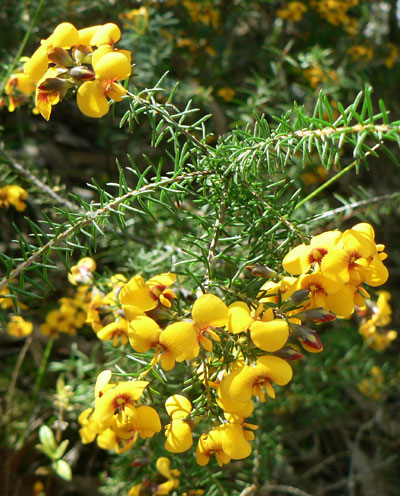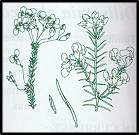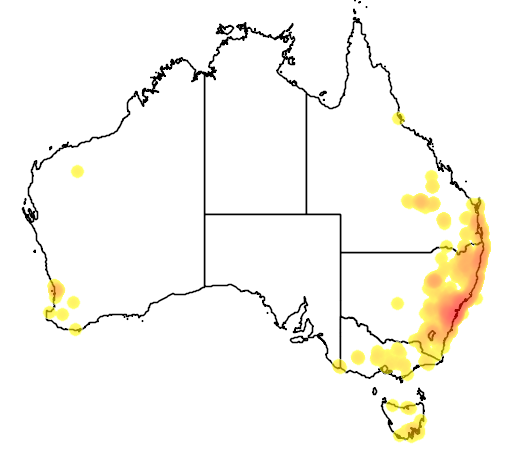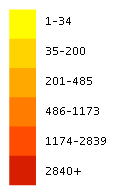Description
Dillwynia retorta
Commonly known as:
Small-leaf Parrot-pea, Published As “species Complex”
Family
Fabaceae.
Genus
Dillwynia.
Name origin
Dillwynia, after British botanist Lewis Weston Dillwyn (1778-1855). Retorta, to twist or turn back, referring to leaves.
Rainfall
400mm+.
Growth rate
Moderate.
Growth height
Up to 3m.
Presence in Australia
Quite widespread in areas west of the Hume Highway. Noted in the areas Urana-Rand-Corowa; Albury; Bowna-Jindera; Thugga-Culcairn East; Upper Back & Upper Jerra Jerra; Sawyers-Forest-Four Post & Little Billabong; Mullengandra; Fowlers Swamp & Wagra; Keajura and Upper Burkes.
This specie has been identified in the following Australian states: Qld, NSW, ACT, Vic, Tas, SA, WA.
Habitat
Heath to dry sclerophyll forest, on acidic well-drained soil.
Habit
Prostrate to erect shrub to 3m high. Leaves spirally twisted and 4-12 mm long.
Similar species
This variable species complex seems to include at least 2 species and requires critical revision.
Site preference
Well-drained light to medium soil with dappled shade or partial sun. Tolerates frost.
Flowering
Yellow and red, Aug-Dec. Profuse.
Seed collection
Monitor closely as seeds released immediately or within 1-2 days of maturity.
Propagation
From scarified seed or cuttings, which strike readily. Soak in near-boiling water for about 30 seconds, before cooling rapidly under flowing cold water. Alternatively soak in cold water for several hours. Dry to prevent rotting before sowing. Germination occurs in 3-4 weeks. Suitable for direct seeding in pots (2-3 seeds per pot).
Shade and shelter
Low-level cover in windbreaks.
Land protection
Legume – improves soil fertility through ‘fixing’ nitrogen.
Wildlife
Important component of understorey layer.
Ornamental
Very ornamental. Useful in gardens and containers. Responds to hard pruning, which promotes bushiness.




